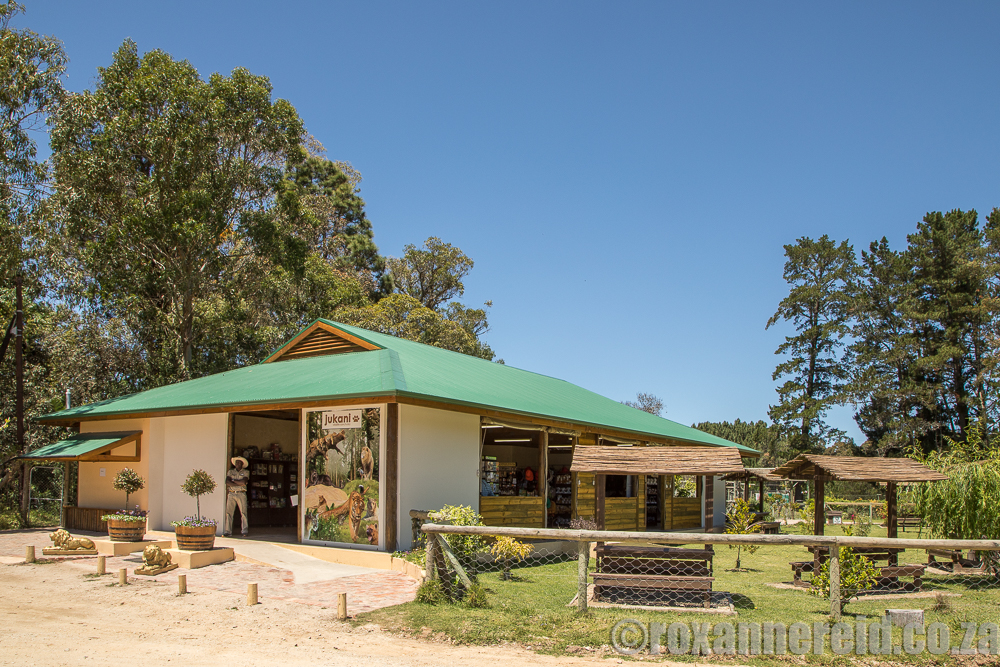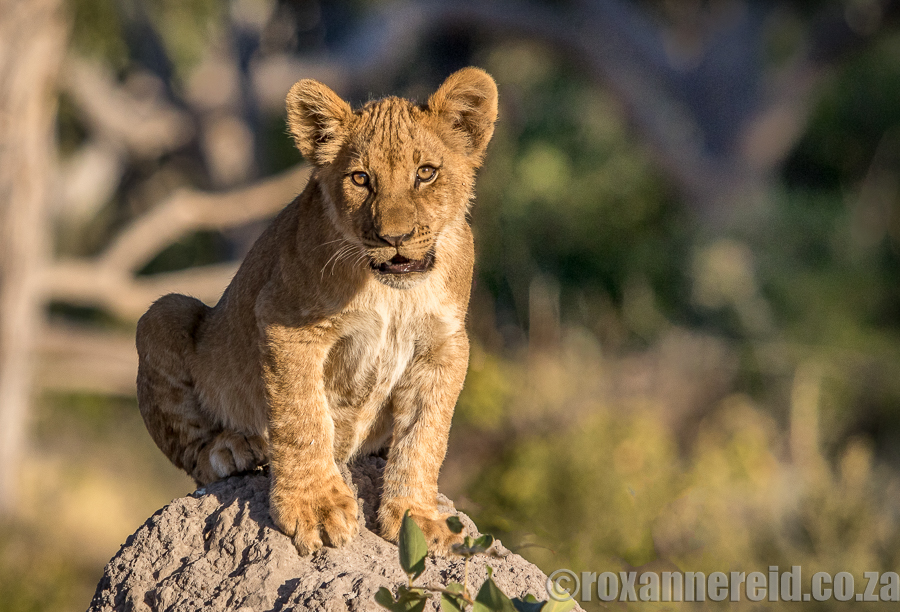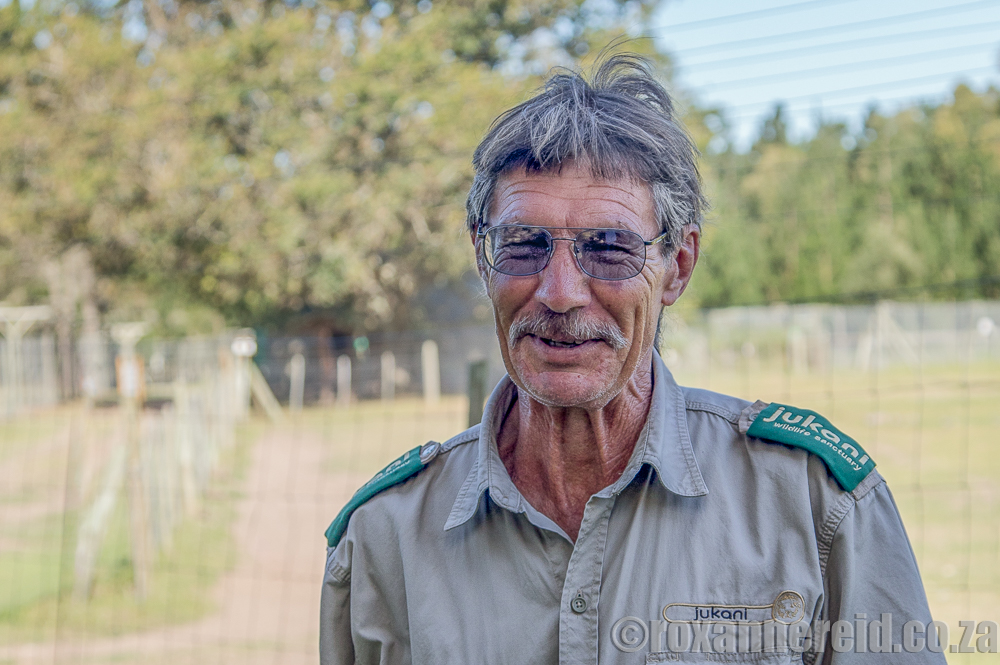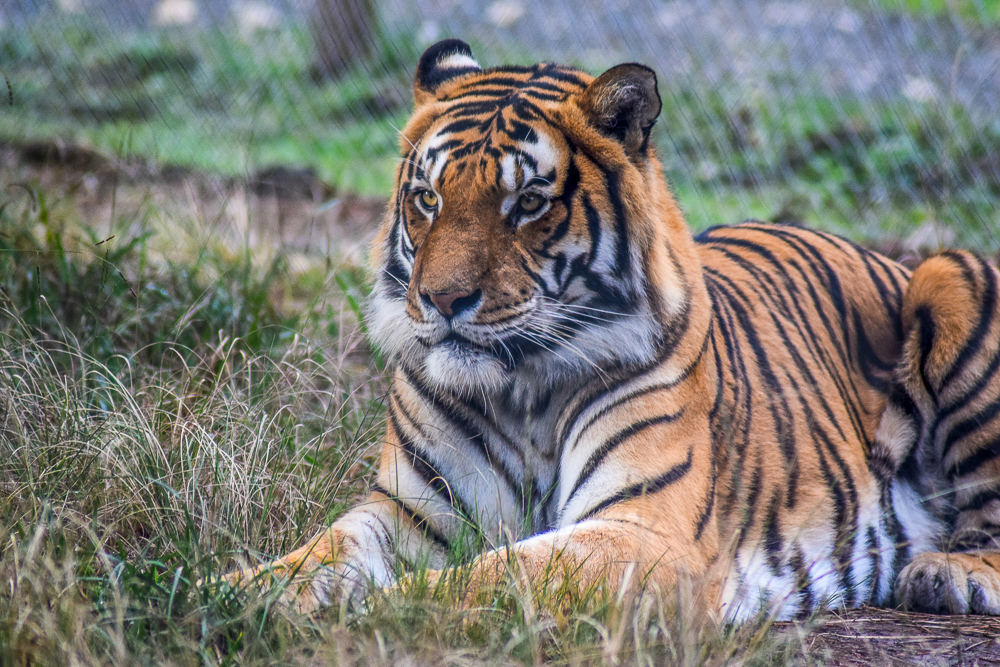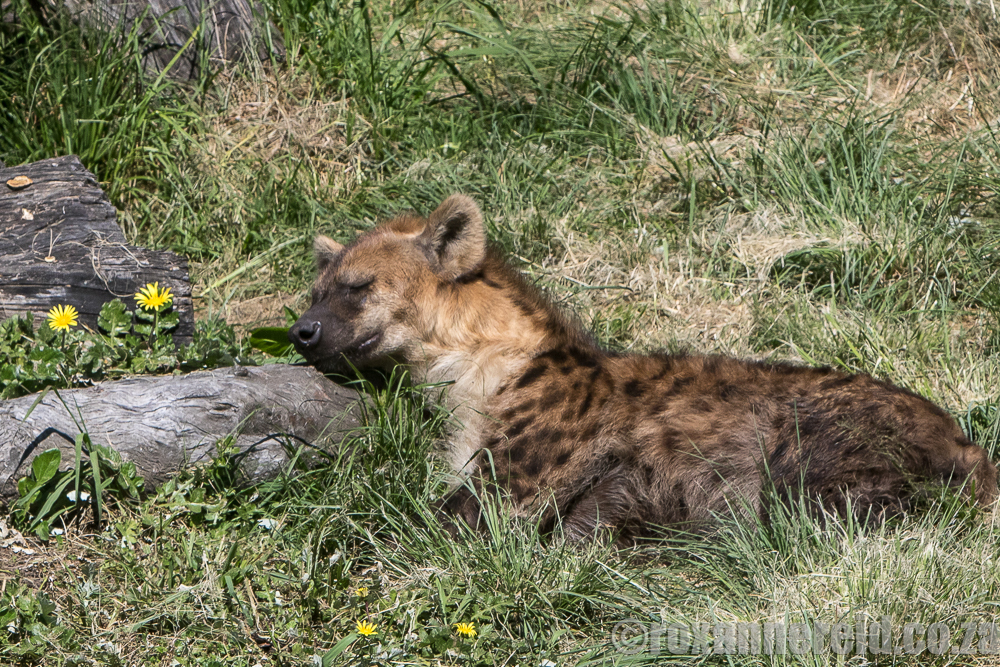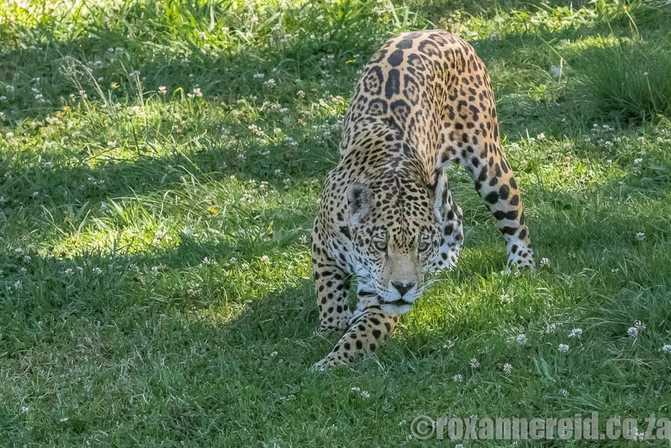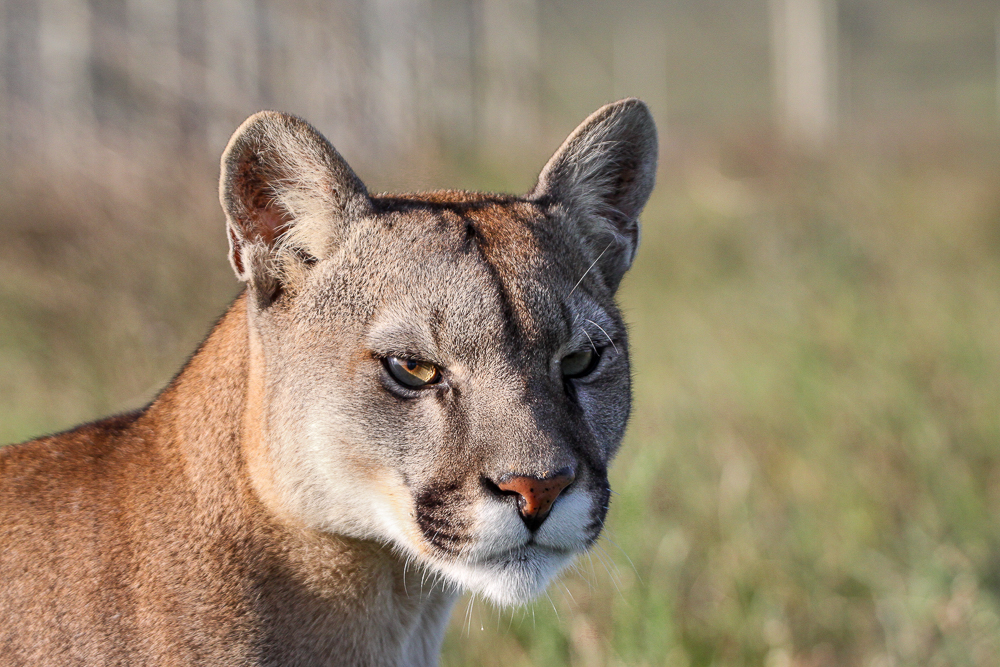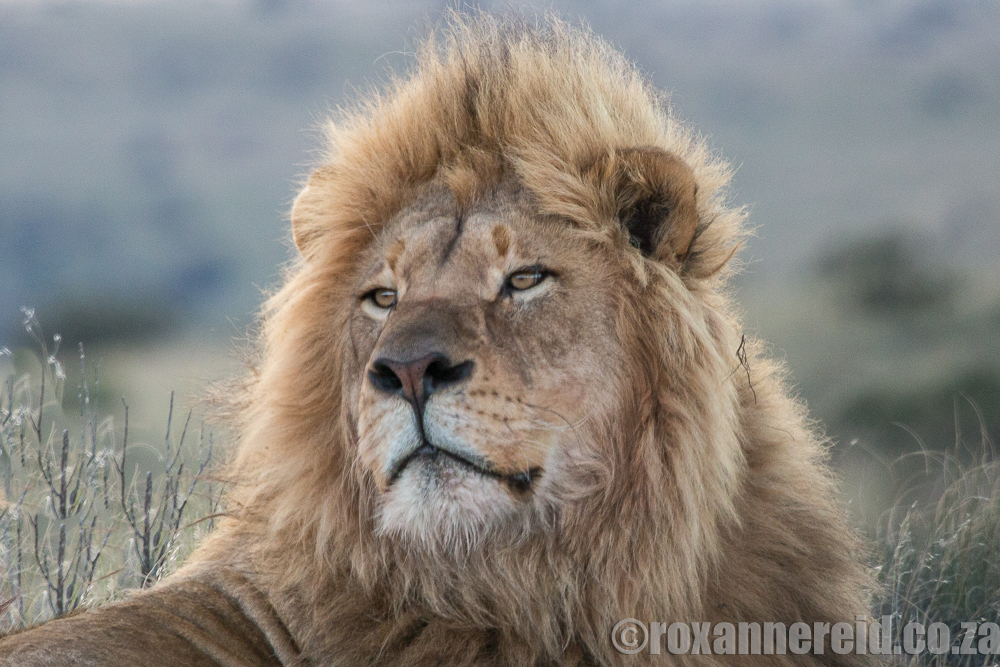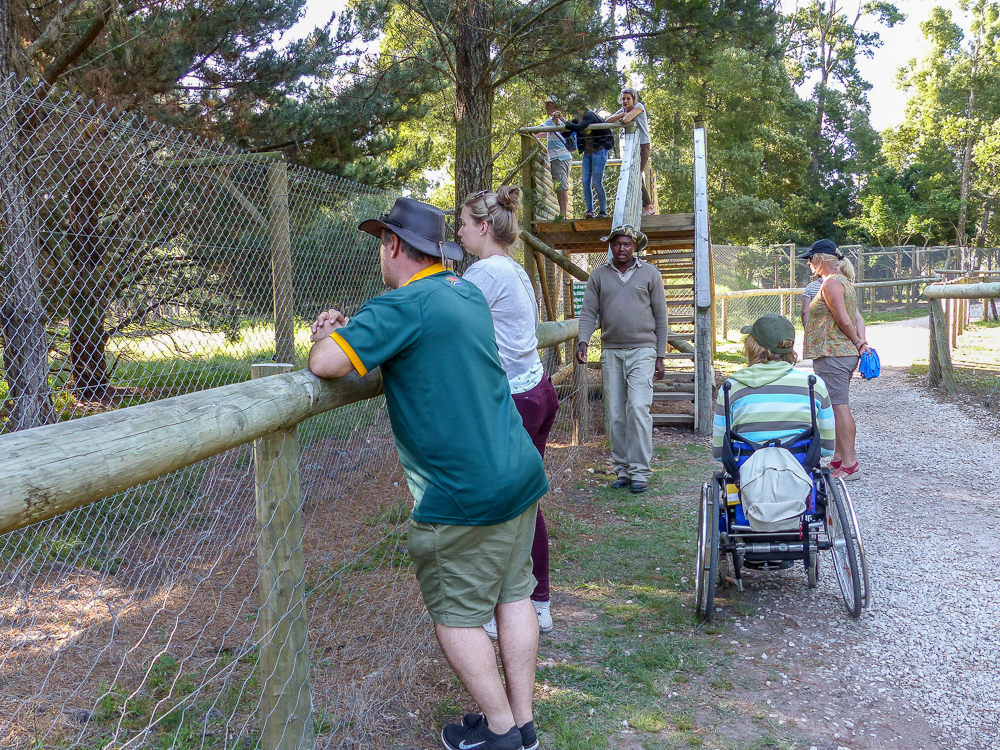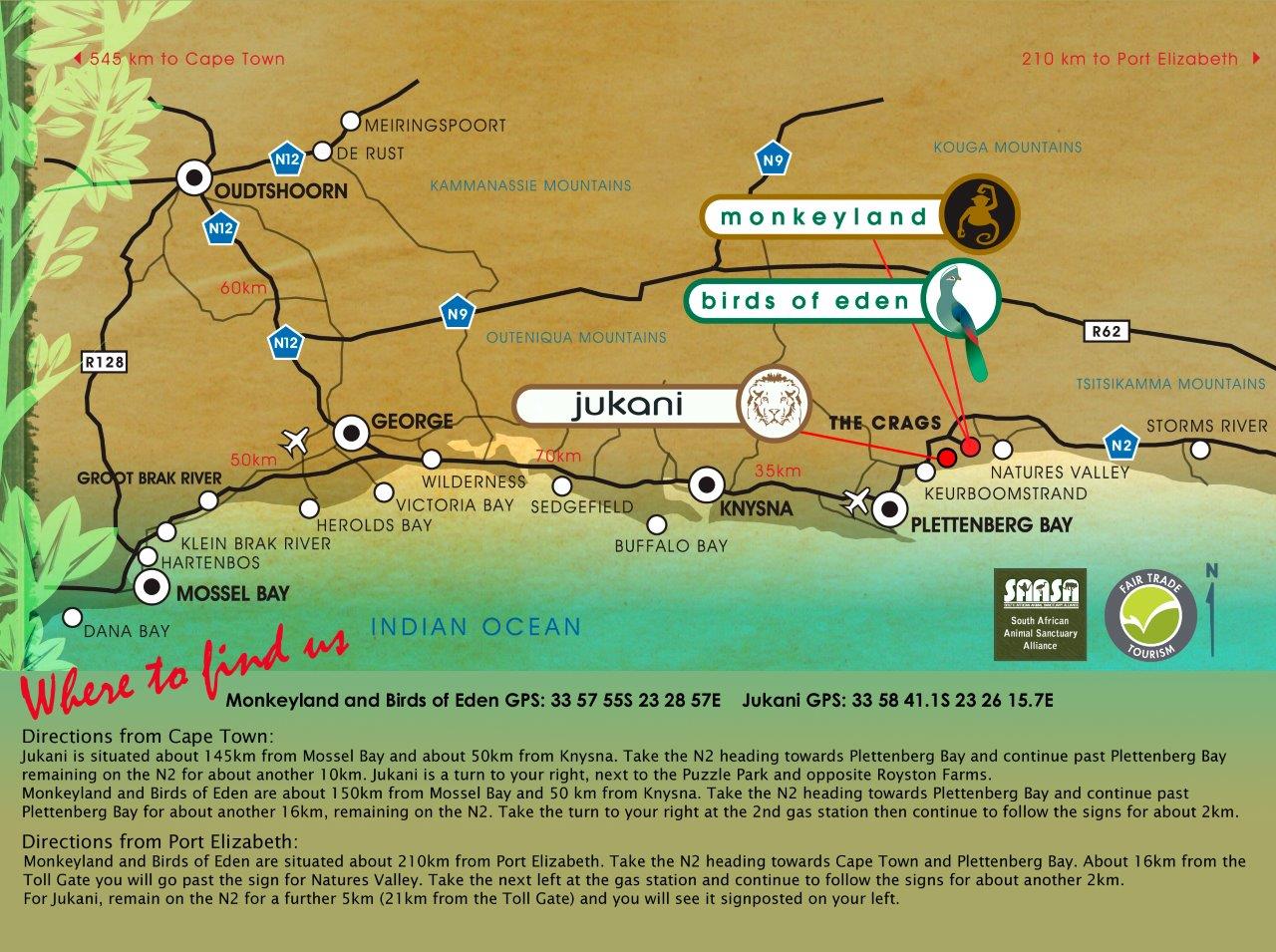
By Roxanne Reid
I’ve never wanted to see tigers, jaguars or cougars in South Africa, simply because they don’t belong here and I don’t enjoy seeing wild animals in captivity. But then I discovered somewhere I could see these exotic cats without feeling bad. Here’s why to visit Jukani Wildlife Sanctuary near Plettenberg Bay on South Africa’s Garden Route.
I’ve never wanted to see tigers, jaguars or cougars in South Africa, simply because they don’t belong here and I don’t enjoy seeing wild animals in captivity. But then I discovered somewhere I could see these exotic cats without feeling bad. Here’s why to visit Jukani Wildlife Sanctuary near Plettenberg Bay on South Africa’s Garden Route.
Jukani is a Fair Trade accredited, responsible tourism sanctuary where the animals come first. They’ve been rescued from captivity, from the illegal pet trade and from wildlife trafficking, and given large enclosures on a 17ha property to live out their natural lives in peace. They were born in captivity and simply don’t have the skills to survive in the wild.
Jukani, part of the South African Animal Sanctuary Alliance (SAASA), provides a protected environment for some 80 animals that chomp through around 1000kg of food every day. Beyond caring for them, Jukani hopes to educate people like you and me, to change the way we think and how we treat animals. It has a zero tolerance policy towards trade in wildlife and animal interactions (petting), and won’t breed animals – three great points in its responsible tourism arsenal.
Jukani, part of the South African Animal Sanctuary Alliance (SAASA), provides a protected environment for some 80 animals that chomp through around 1000kg of food every day. Beyond caring for them, Jukani hopes to educate people like you and me, to change the way we think and how we treat animals. It has a zero tolerance policy towards trade in wildlife and animal interactions (petting), and won’t breed animals – three great points in its responsible tourism arsenal.
An entertaining way to learn
Our guide was Bert Vos, who has an encyclopaedic knowledge of the animals and the threats they face. He also has a dry sense of humour.
In the first enclosure were a three-legged springbok and a few zebra. The idea, he told us, is for the smell of them to psychologically simulate the predators. ‘Zebras and primates are sweet meat, like chocolates for carnivores,’ he quipped. Pointing out the difference between predator and prey, he noted: ‘A cheetah runs for breakfast, a springbok runs for its life.’
He was deadly serious on the topic of human interactions with animals. ‘Whenever something goes wrong, the cat always gets the bullet. There’s absolutely no conservation value in petting, and part of my job is educating guests about animals in captivity.’
Our guide was Bert Vos, who has an encyclopaedic knowledge of the animals and the threats they face. He also has a dry sense of humour.
In the first enclosure were a three-legged springbok and a few zebra. The idea, he told us, is for the smell of them to psychologically simulate the predators. ‘Zebras and primates are sweet meat, like chocolates for carnivores,’ he quipped. Pointing out the difference between predator and prey, he noted: ‘A cheetah runs for breakfast, a springbok runs for its life.’
He was deadly serious on the topic of human interactions with animals. ‘Whenever something goes wrong, the cat always gets the bullet. There’s absolutely no conservation value in petting, and part of my job is educating guests about animals in captivity.’
Our tour with Bert showed that Jukani knows how to use entertainment to teach environmental awareness. The rush of facts – about killing methods, conservation status, mating rituals and more – made for a fascinating 90 minutes that was over far too quickly.
The animals
Take the Siberian tiger, for instance. ‘There are only 250 left in the wild and they’re dying at a rate of two a week because they’re in demand for medicine,’ he said. In the Far East, a tiger’s tail around the waist is thought to keep away evil spirits, the teeth to make you rich. ‘A single whisker to ward off evil spirits sells for $22,000.
‘They’re anti-social cats who lead secret lives and will walk around only to patrol their area and keep it safe,’ he continued. ‘That’s why they’re so easy to hunt; you just need to find a tiger path and then lie in wait. We calculate that there’ll be no Siberian tigers in the wild in five years.’
The males can jump 3m high and run at 80km/h. They kill by jumping on the back of an animal and using their 10cm-long canines to rip out a piece of the spine.
Take the Siberian tiger, for instance. ‘There are only 250 left in the wild and they’re dying at a rate of two a week because they’re in demand for medicine,’ he said. In the Far East, a tiger’s tail around the waist is thought to keep away evil spirits, the teeth to make you rich. ‘A single whisker to ward off evil spirits sells for $22,000.
‘They’re anti-social cats who lead secret lives and will walk around only to patrol their area and keep it safe,’ he continued. ‘That’s why they’re so easy to hunt; you just need to find a tiger path and then lie in wait. We calculate that there’ll be no Siberian tigers in the wild in five years.’
The males can jump 3m high and run at 80km/h. They kill by jumping on the back of an animal and using their 10cm-long canines to rip out a piece of the spine.
The Bengal tiger is smaller than the Siberian but more aggressive - the one that’s a man-eater. ‘There are only 1500 left in the wild. Since a population of 2500 is the point of no return for the survival of a species, we will lose the Bengal tiger too,’ he said.
We also saw a white Bengal tiger, the result of a recessive gene. ‘The last one in the wild was shot in 1958 and there are about 3500 in captivity. Only 20% of them survive because of inbreeding and weak genes. They also go blind [from incurable progressive retinal atrophy].’
We also saw a white Bengal tiger, the result of a recessive gene. ‘The last one in the wild was shot in 1958 and there are about 3500 in captivity. Only 20% of them survive because of inbreeding and weak genes. They also go blind [from incurable progressive retinal atrophy].’
Bert’s eyes lit up when he talked about the spotted hyena, the first African predator we saw on our stroll around Jukani. ‘It’s the second most successful hunter in Africa after wild dogs,’ he said. Then he rattled off other remarkable features:
Bert grew up in the Okavango Delta area and later spent 13 years with the Maasai in the Serengeti. The Maasai don’t bury their dead, rather leaving them for the hyenas. ‘A spotted hyena toilet looks like a second-hand furniture store because it will eat bits of rocks and wood, whatever it needs to get at all the bodily fluids,’ he said.
- This ‘biting machine’ has a biting force of up to 1300 pounds per square inch (8960 KPa), compared to only 600 pounds per square inch (4135 KPa) in lions.
- The spottie is two-and-a-half times smaller than a lion or tiger but its heart is two-and-a-half times bigger, which makes it a better runner over long distances.
- It has a 95% success rate with kills compared to a lion’s or tiger’s success rate of just 30%.
- Dominant females make their own testosterone. The fake penis in the female is the birth canal and cubs are born with fully erupted teeth and eyes open, ‘ready for war’, as Bert put it.
Bert grew up in the Okavango Delta area and later spent 13 years with the Maasai in the Serengeti. The Maasai don’t bury their dead, rather leaving them for the hyenas. ‘A spotted hyena toilet looks like a second-hand furniture store because it will eat bits of rocks and wood, whatever it needs to get at all the bodily fluids,’ he said.
Another African predator you’ll see at Jukani is the caracal, which has the most ways to kill of all carnivores. ‘It can hunt on the ground or in trees, it can jump 3.5m into the sky to snatch flying birds from the air. No other cat can hunt mid-air like that. It hunts day or night and brings down prey five times its own size. The lion can only hunt prey three times its size.
‘But it’s a destructive killer because it kills again and again for no reason – that’s why it’s so hated by farmers. It kills by severing arteries in the neck so the prey bleeds out. Then it skins the prey with its claws so you can always tell a caracal kill.’
‘But it’s a destructive killer because it kills again and again for no reason – that’s why it’s so hated by farmers. It kills by severing arteries in the neck so the prey bleeds out. Then it skins the prey with its claws so you can always tell a caracal kill.’
The jaguar, from South America, has a square blocky head and shorter legs than the leopard, with a black stripe along the spine, unlike a leopard. ‘Whereas a leopard breaks the neck and disembowels its prey, a jaguar crushes the skull to kill with jaws that exert 750 pounds per square inch [5170 KPa] of pressure,’ said Bert.
The American mountain lion has about 40 different names – cougar, puma and many other local Native American names. It evolved in the forest so its coat matches the colour of pine needles. It’s the second fastest cat after the cheetah. Unlike the caracal, which pounces vertically, the mountain lion hunts by pouncing 12-15m horizontally.
Other animals you can see at Jukani include leopard, black leopard, lion (the most aggressive cat), white lion, cheetah, serval and wild dog. Read the info panels about each of the animals and you’ll be amazed at how special it is in its own way.
Remember that these are still predators so do as your guide tells you, don’t stick fingers through the fence and don’t be stupid. You can view them through the fence of their large enclosures or from tall viewing platforms for a chance to see them without a fence in the way.
Need to know
You may also enjoy
Back to nature on the Garden Route
Goukamma Nature Reserve on the Garden Route
Copyright © Roxanne Reid - No words or photographs on this site may be used without permission from roxannereid.co.za
- Find Jukani just off the N2 about 10km east of Plettenberg Bay (see map and directions above).
- Unless you’re a big group of more than 15, you can simply rock up. Tours run every 15 or 20 minutes so it won’t take long before there’s one for you to join. A tour takes about 90 minutes.
- Jukani opens at 9:00 every day of the week, including Sundays. The last tour leaves at 16:00.
- There’s a shop and restaurant on site and plenty of parking.
- You can buy a ticket just for Jukani, or a reduced-rate cluster ticket that will also give you access to SAASA sister sanctuaries in the area, Monkeyland and Birds of Eden.
You may also enjoy
Back to nature on the Garden Route
Goukamma Nature Reserve on the Garden Route
Copyright © Roxanne Reid - No words or photographs on this site may be used without permission from roxannereid.co.za
